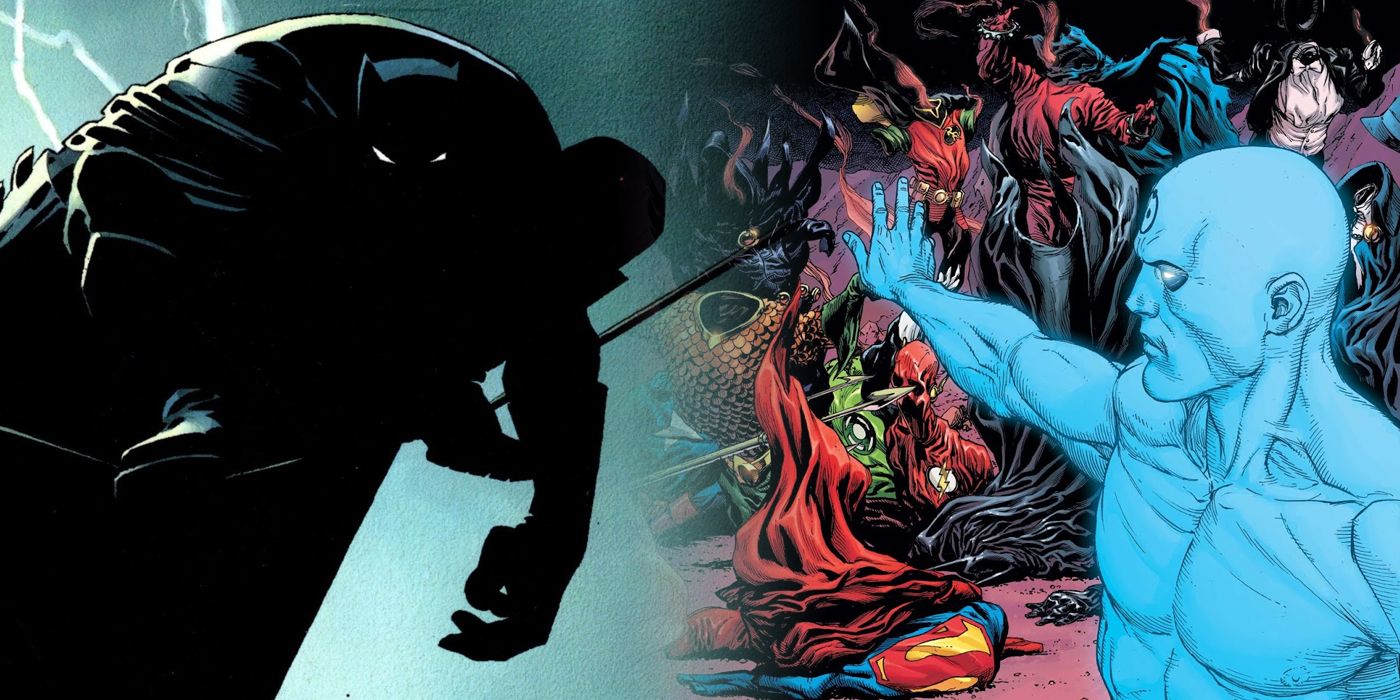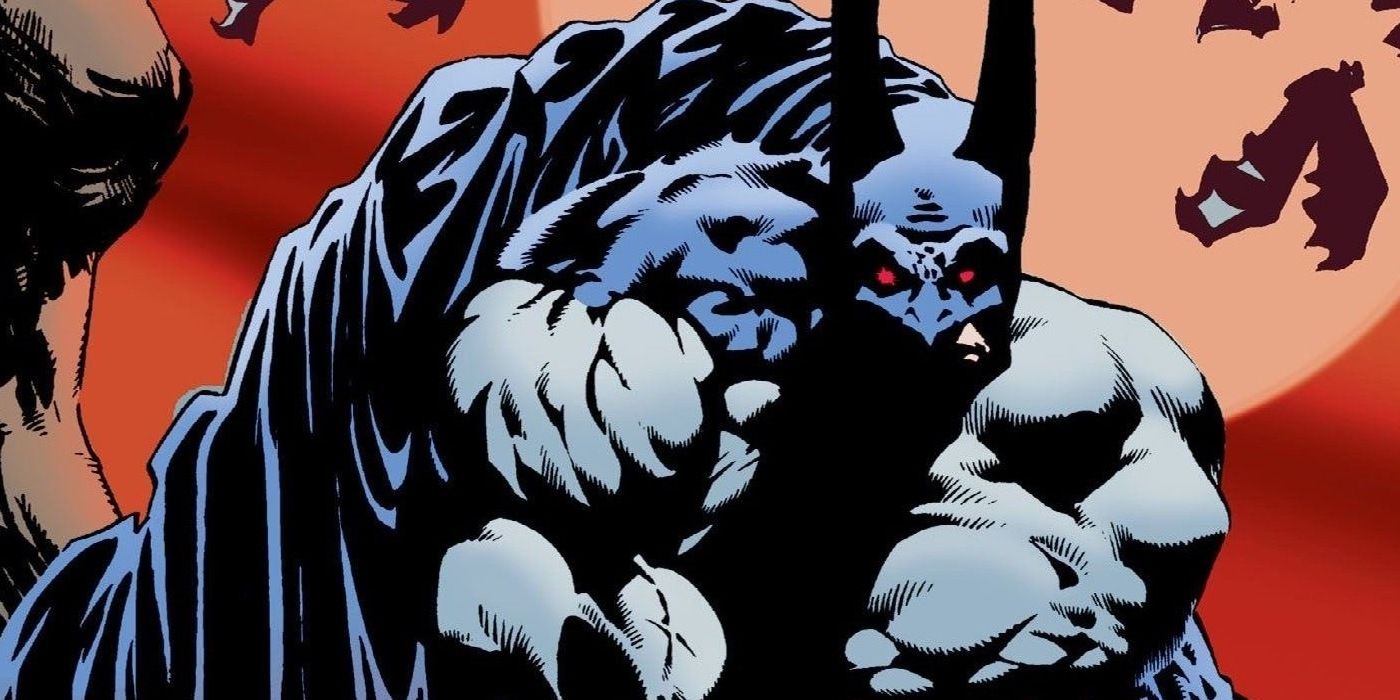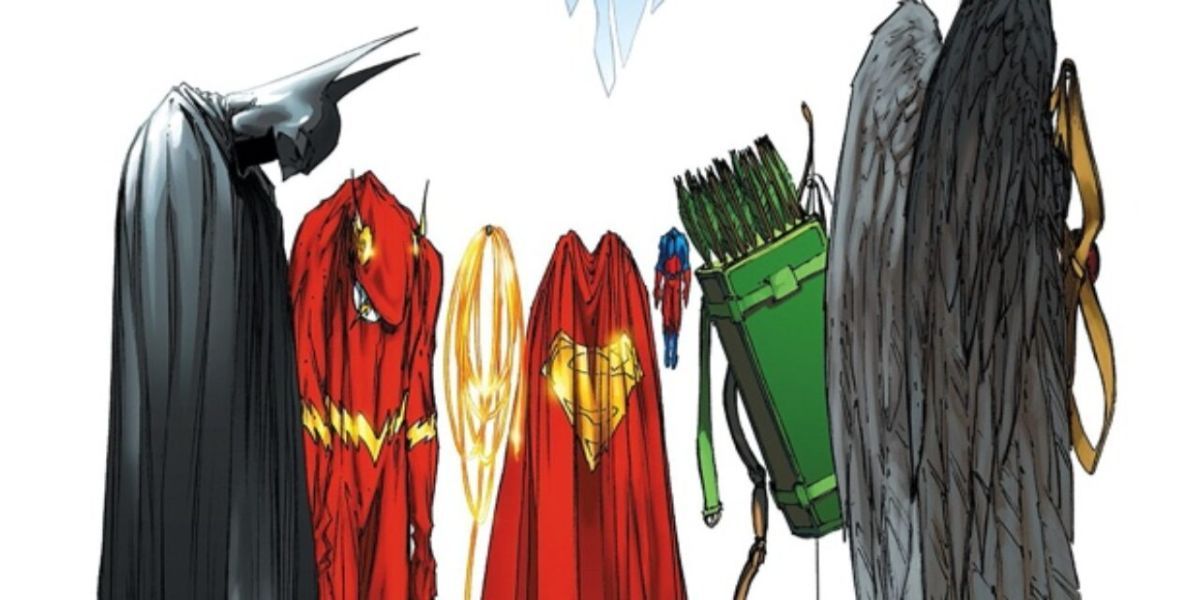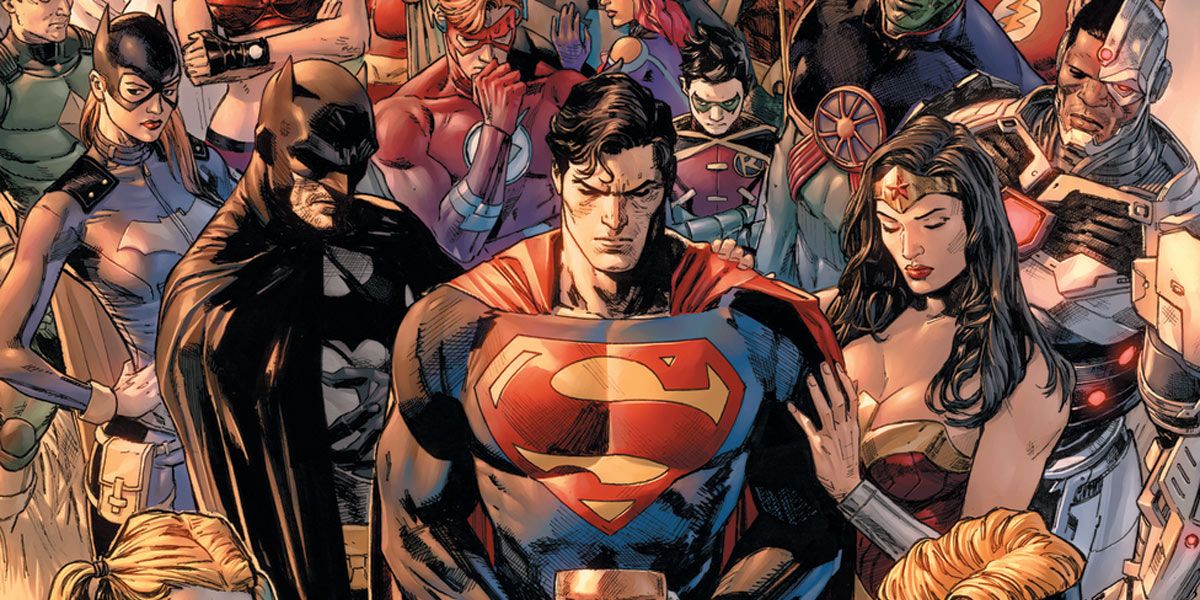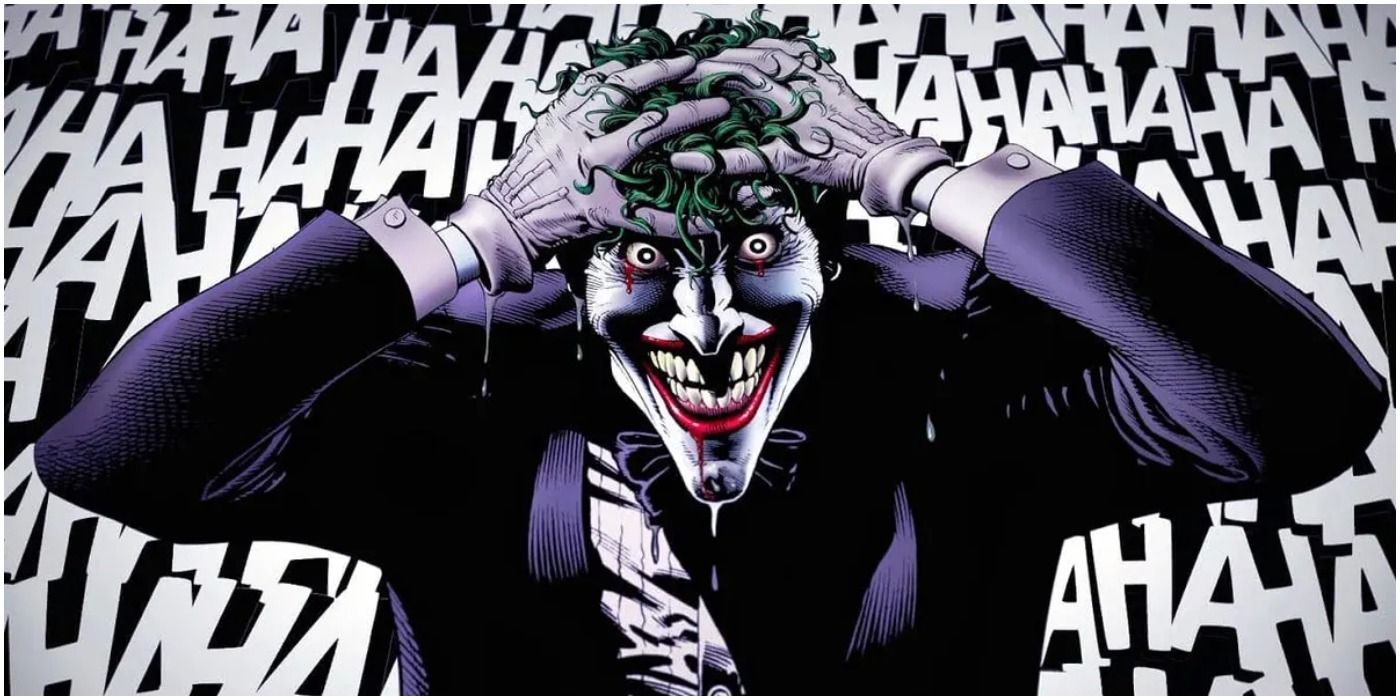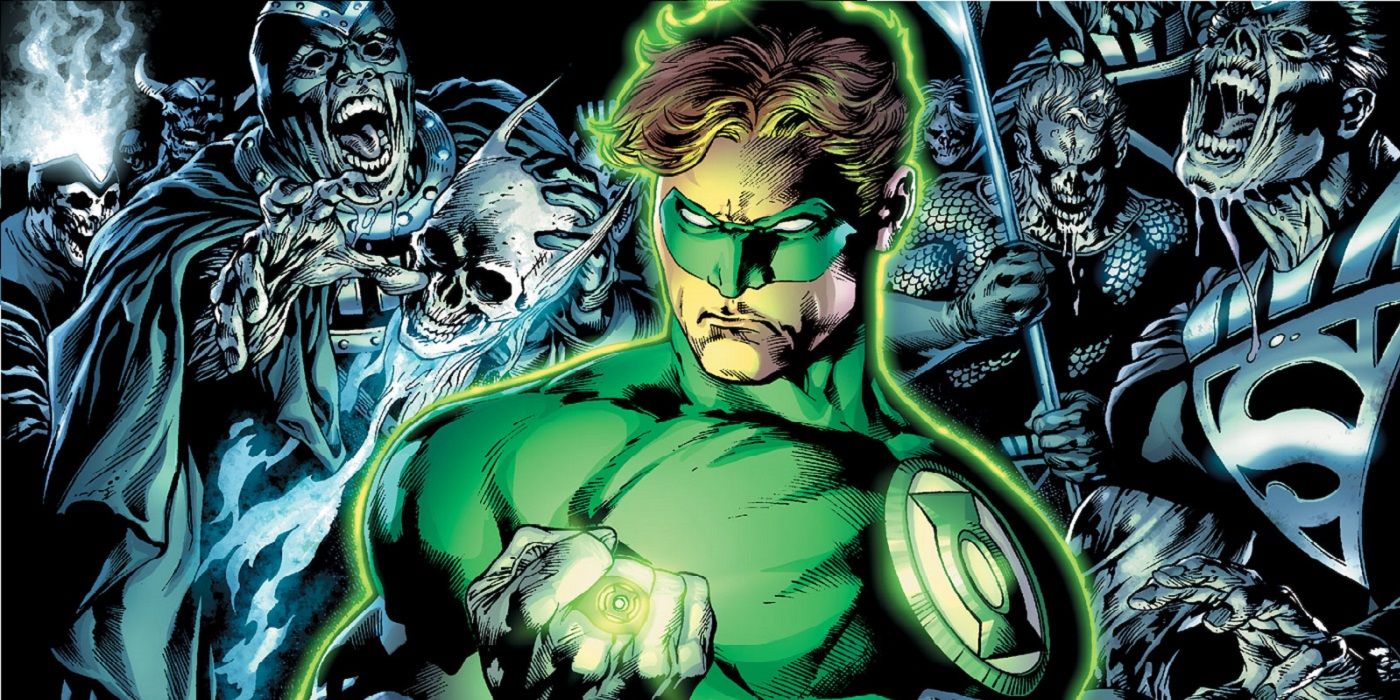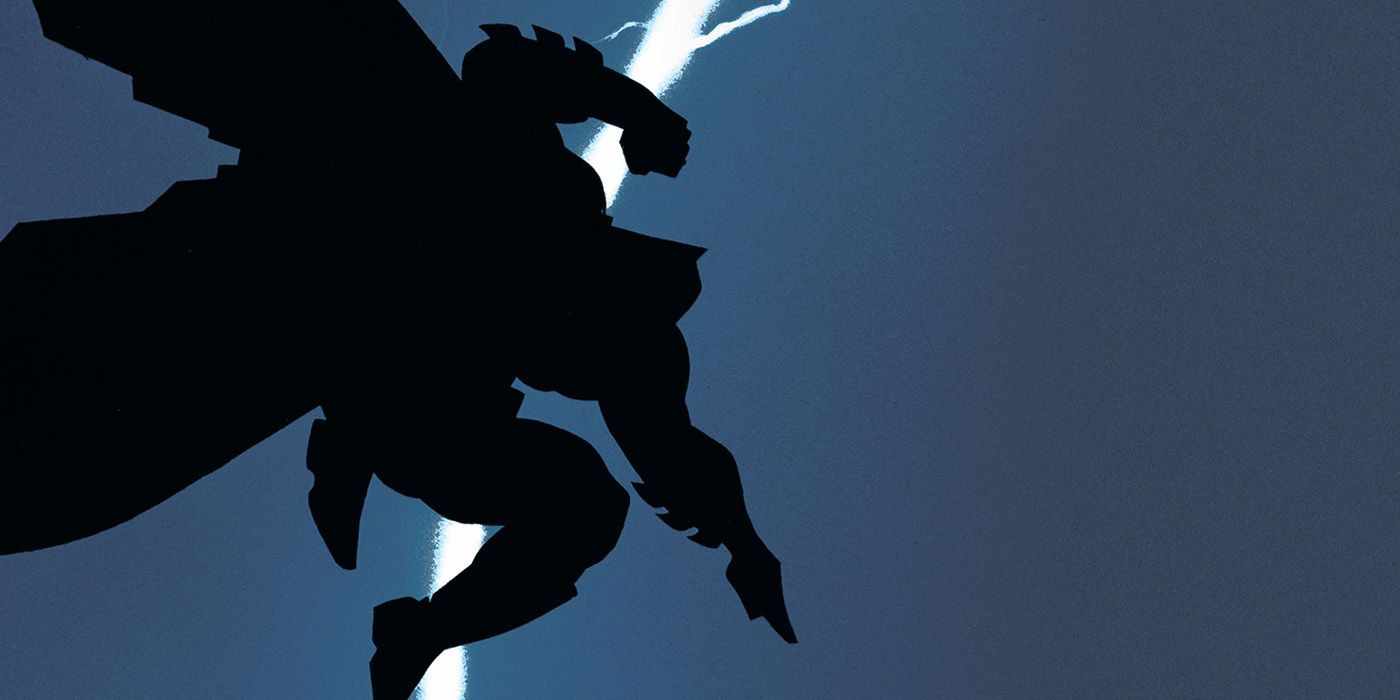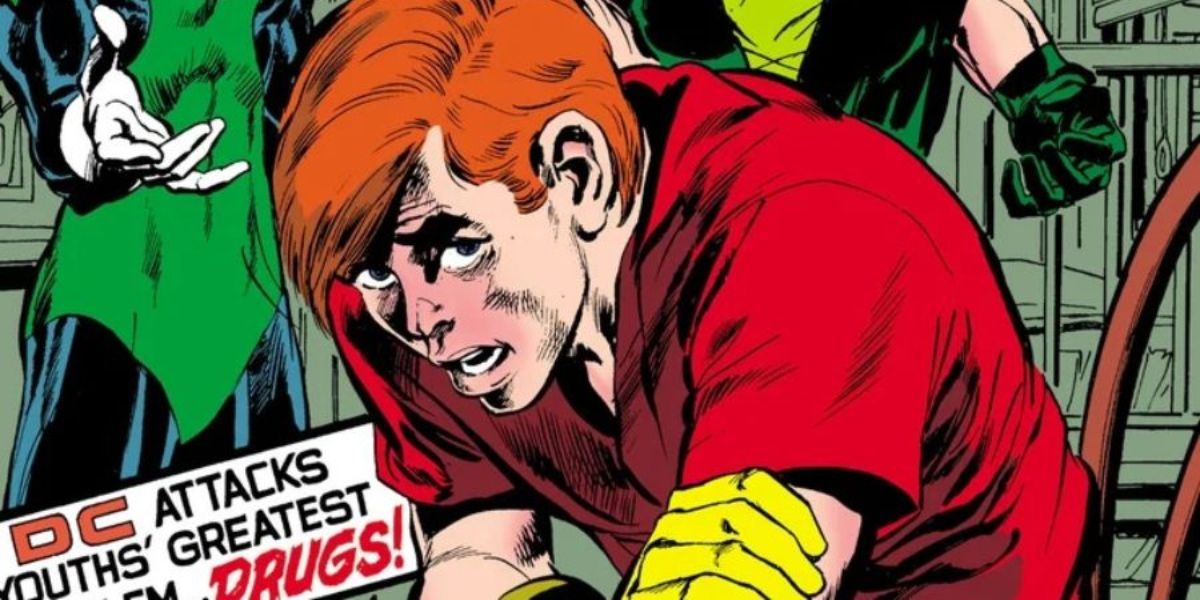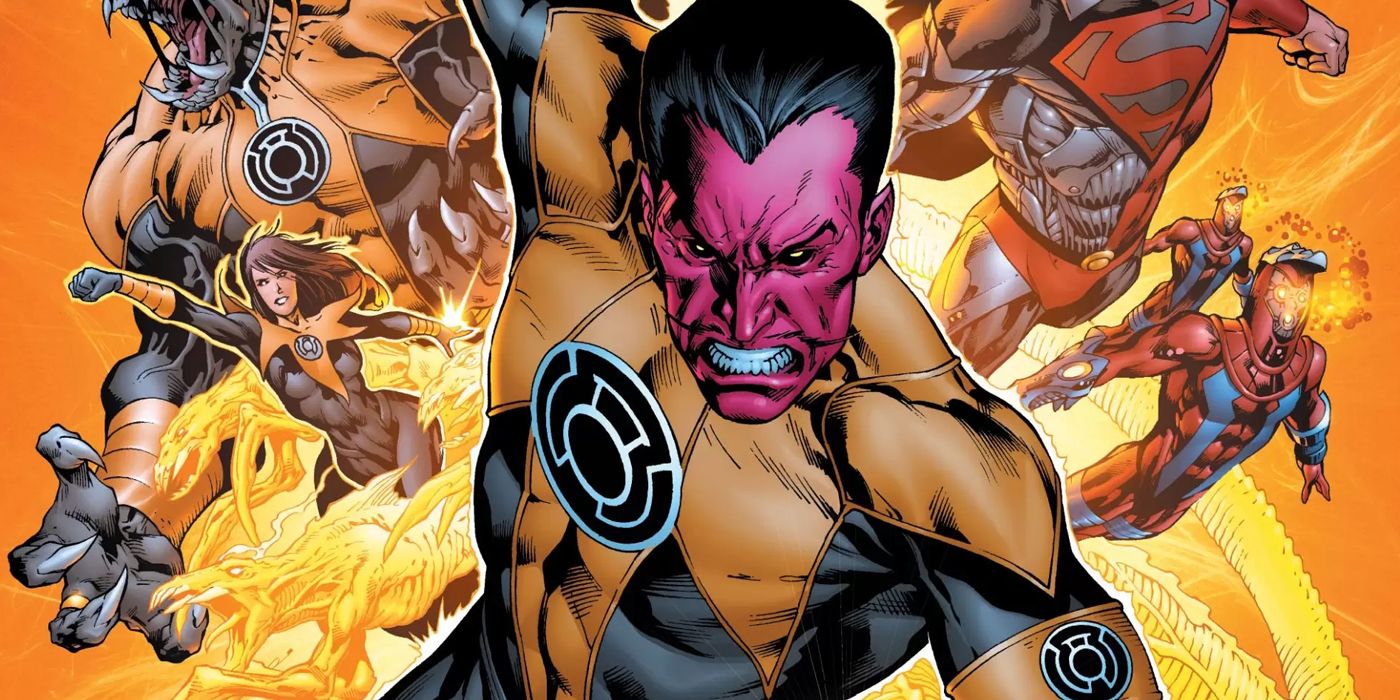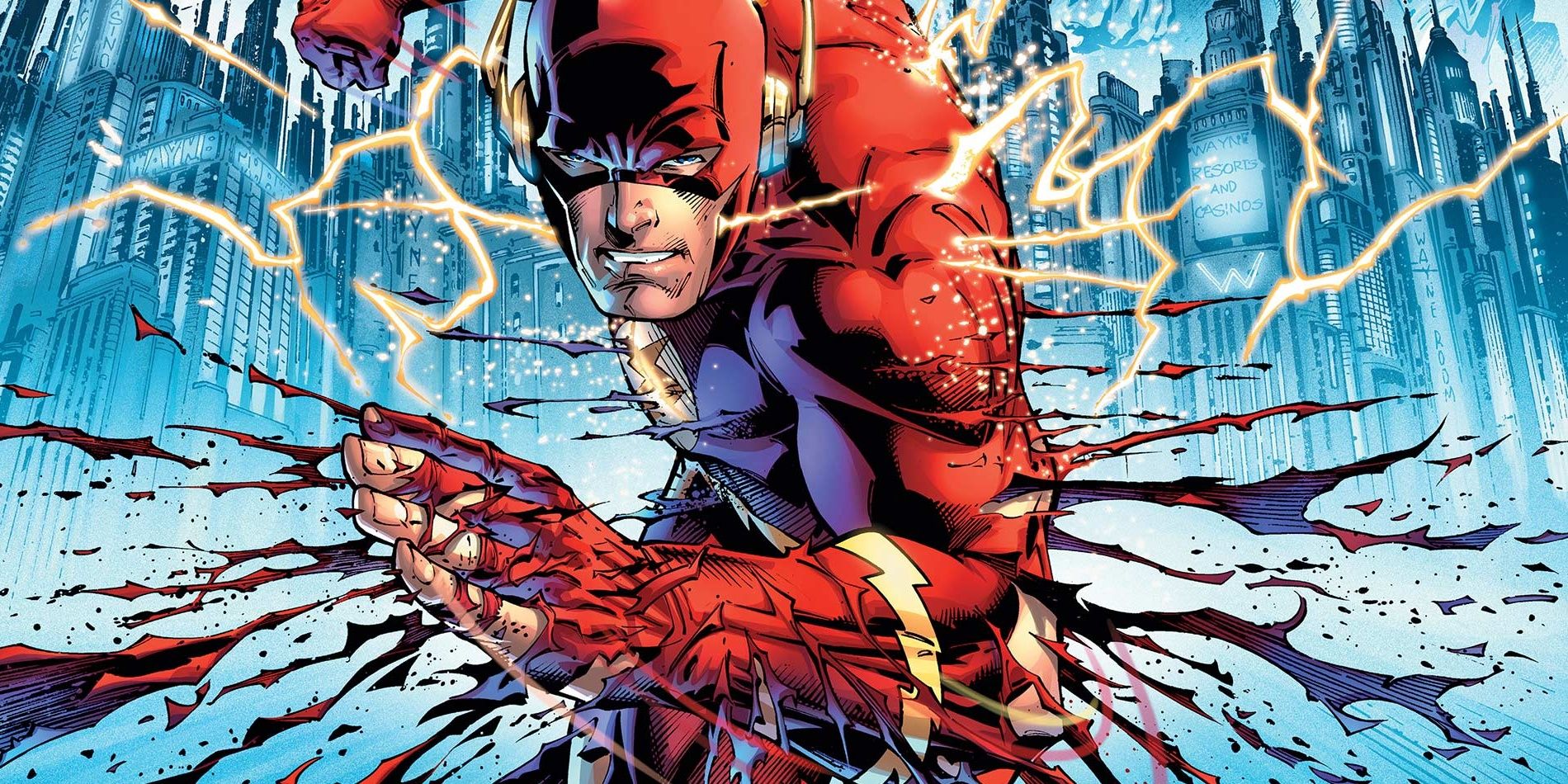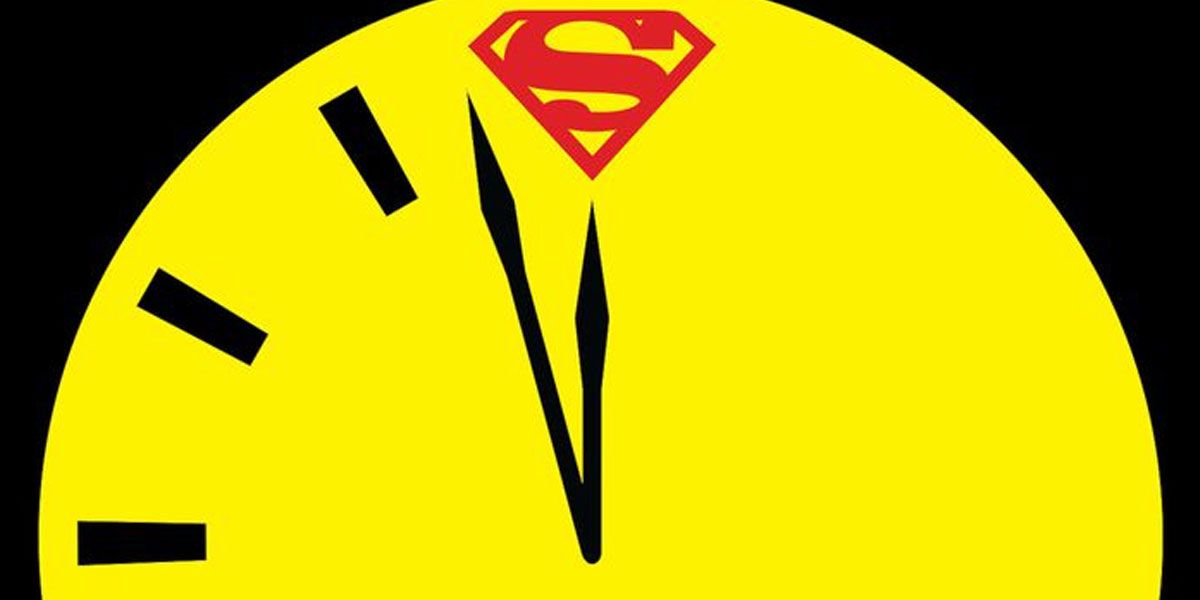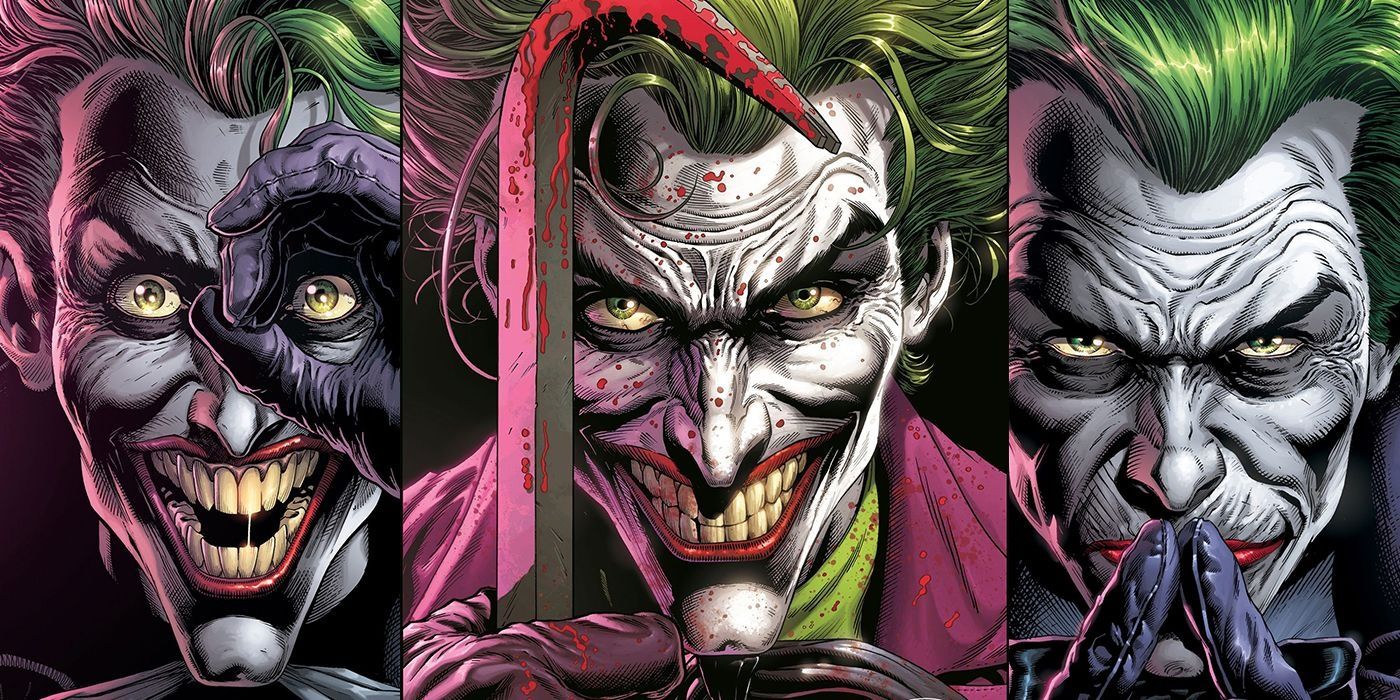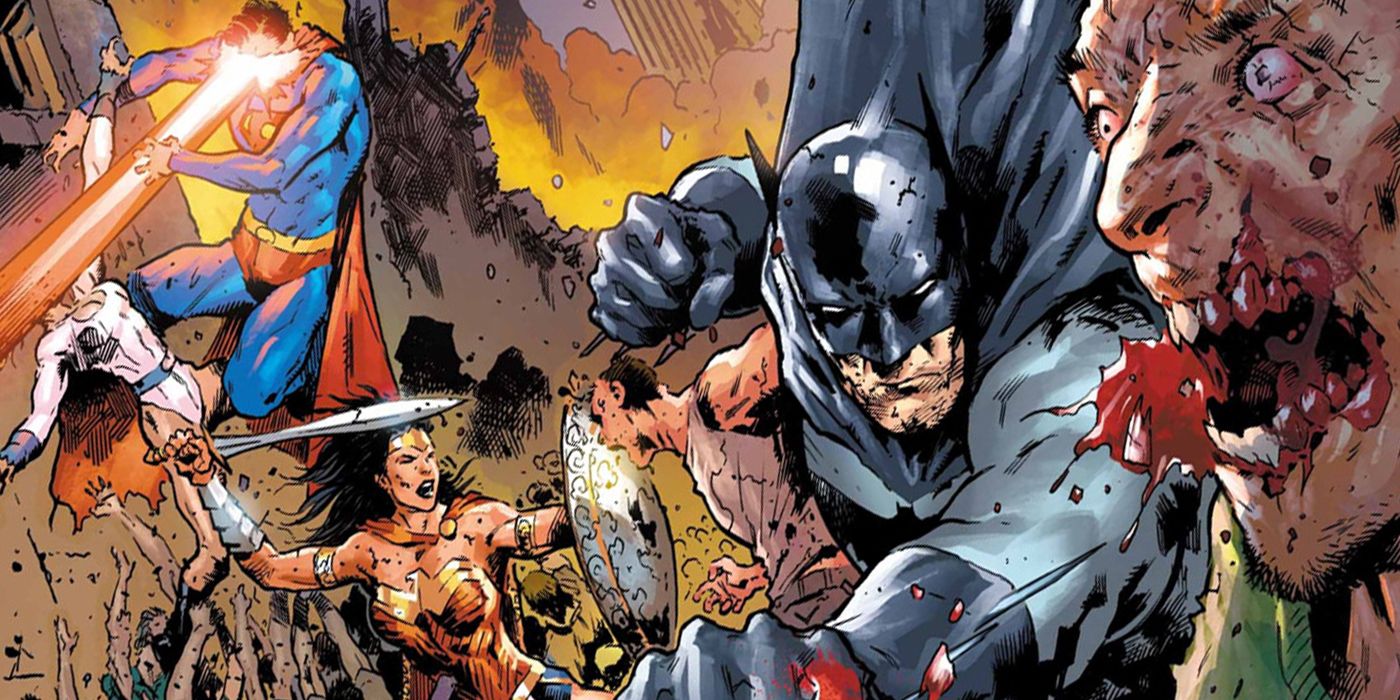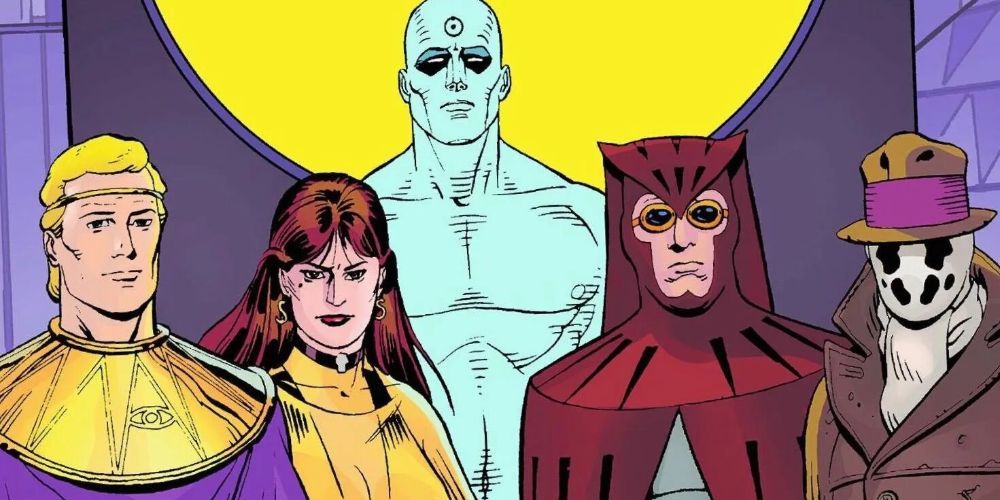For years, DC Comics published less mature comics than the Marvelous competition. This changed in 1985, as a new generation of creators brought a darker style of storytelling to the comic industry. DC led the charge and since has become one of the most iconic purveyors of mature comics.
DC has created timeless comics that play into themes darker than the usual superhero fare. While many of these darker stories have been great, some of them have delved too far into their darkness and mature themes. Dark stories walk a tightrope, and some of the best and worst stories are among the darkest.
The article discusses sensitive topics, including abuse, addiction, sexual assault, and extreme violence.
Updated on Aug 31, 2022 by Scoot Allan: Dark Crisis on Infinite Earths has revisited every major event from the past and their surprising connections to The Great Darkness of the DC universe. DC has been focused on darker stories and mature storytelling for years, and the latest event continues to showcase the success of that decision. There are several dark comics and series from DC and Vertigo that have explored darker themes, while some Elseworlds stories brought the DC multiverse to its darkest depths.
13 Batman & Dracula: Red Rain
Creative Team: Writer Doug Moench, Penciler Kelley Jones, Inker Malcolm Jones III, Colorist Les Dorscheid, And Letterer Todd Klein
While Batman comics are inherently dark and have explored quite a few mature stories over the years, one of the Dark Knight's darkest was an Elseworlds tale called Batman & Dracula: Red Rain. The titular match-up between the Dark Knight and the Lord of the Vampires comes only after Batman gets infected by a rebellious thrall of Dracula.
Batman's slow transformation into a creature of the night allows him to take on Dracula and his undead forces. However, it forever turns him into a bloodsucking vampire, something that has gory consequences for Gotham City. Follow-ups like Bloodstorm and Crimson Mist further shock readers as Batman's thirst takes its toll on his greatest villains before his allies turn on the vampiric Batman.
12 Identity Crisis
Creative Team: Writer Brad Meltzer, Penciler Rags Morales, Inkers Michael Bair, Colorist Alex Sinclair, And Letterer Ken Lopez
Identity Crisis has a very different reputation now than when it came out. The murder mystery started off dark and never really looked back. The Justice League mindwipes were a great idea, and the death of Jack Drake and Captain Boomerang played wonderfully with fans.
However, the sexual assault and later murder of Sue Dibny were so horrible they overshadowed any of the story's good points. Murder mysteries are pretty dark by definition, and Identity Crisis tried to inject some gritty realism into the DC Universe. The problem came with its handling of Dibny, causing readers to rebel against it, which ultimately hurt its legacy.
11 Heroes in Crisis
Creative Team: Writer Tom King, Penciler/Inker Clay Mann, Colorist Tomeu Morey, And Letterer Clayton Cowles
Heroes in Crisis might have been better if it wasn't for former DC chief Dan DiDio's legendary hatred of Wally West. The story had a unique premise — heroes murdered at a facility designed for them to receive mental help — but the ending took things too far.
A story about superhero mental health that's also a murder mystery was never going to be light fare. When the story dropped the big Wally West reveal, it sabotaged the whole thing. The saddest part about Heroes in Crisis was that it did a great job when it focused on the trauma that comes with being a superhero, but it fell short with its Wally West slandering.
10 Batman: The Killing Joke
Creative Team: Writer Alan Moore, Penciler/Inker Brian Bolland, Colorist John Higgins, And Letterer Richard Starkings
Batman: The Killing Joke is the most iconic Joker story of them all, and it's naturally a dark one. The graphic novel gave Joker a tragic origin story and focused on him trying to prove a theory. He believed anyone would turn out like him if they had one bad day, which took the story down some dark paths.
The Joker brutalized Barbara Gordon and used the images to torment her father, Commissioner Gordon. Alan Moore brought out the darkness within Joker, and Bolland's art beautifully captured the book's horror, nailing the grotesque and unsettling elements and the emotion.
9 Blackest Night
Creative Team: Writer Geoff Johns, Penciler Ivan Reis, Inker Oclair Albert, Colorist Alex Sinclair, Letterer Nick J. Napolitano, And Multiple Tie-In Teams
Superhero zombie stories are meant to be dark, and Blackest Night is a perfect example of that. Blackest Night is one of the best DC event books and pays off years of build-up. It pits the heroes of the DC Universe against the Black Lantern Corps, composed of their resurrected friends and enemies.
The embodiment of Death known as Nekron controlled the BLC, and widespread chaos and death followed. The story didn't skimp on the gore and violence, and the art played up the book's dark nature by having most of it occur at night. It used its darkness effectively to tell a gripping tale about superheroes versus their zombified loved ones.
8 Batman: The Dark Knight Returns
Creative Team: Writer/Penciler Frank Miller, Inker Klaus Janson, Colorist Lynn Varley, And Letterer John Costanza
1985 was a banner year for darkness in comics, and one leader of the charge was Frank Miller's Batman: The Dark Knight Returns. Taking place in a crime-ridden future Gotham City, Bruce Wayne returned to the mantle of Batman and set out to clean up the city once again. Old friends and enemies alike came out of the woodwork for a few climactic last battles.
The Dark Knight Returns helped redefine Batman comics. It played up the darker, noir-influenced, and downright fascistic undertones of the character. Miller created a dark masterpiece that changed Batman and the world of comics forever. The series received a few continuations over the years that maintain the darkness of the story but didn't capture readers the same.
7 "Snowbirds Don't Fly"
Creative Team: Writer Dennis O'Neil, Penciler/Inker Neal Adams, Colorist Cory Adams, And Letterer John Costanza
In 1971, DC decide to tackle a serious issue affecting youths across the world with Green Lantern/Green Arrow's huge reveal. The cover featured Roy Harper/Speedy using drugs, and Green Arrow's exclamation that "My ward is a junkie!" mirrored his harsh reaction inside the comic.
Speedy had experienced abandonment from his father figure and a few other personal problems. In an effort to escape his problems, the young hero began abusing heroin. The dark themes from the two-part story would have lasting ramifications for Speedy, and it wouldn't be the last time DC Comics portrayed Roy using drugs to escape his pain.
6 The Sinestro Corps War
Creative Teams: Writers Geoff Johns, Peter Tomasi, And Dave Gibbons; Artists Ivan Reis, Ethan Van Sciver, And Patrick Gleason; And Multiple Tie-In Teams
The Sinestro Corps War crossed through Green Lantern and Green Lantern Corps and kicked off the War of Light storyline that would culminate in Blackest Night. It showcased the clash between the Green Lantern Corps and the Sinestro Corps in an intergalactic war of epic proportions.
A must-read for Sinestro fans, The Sinestro Corps War gets right into the horrors of the conflict between the two factions. War is never pleasant, and The Sinestro Corps War shows that by giving fans some epic cosmic battles that carry grave consequences.
5 Flashpoint
Creative Team: Writer Geoff Johns, Penciler Andy Kubert, Inker Sandra Hope, Colorist Alex Sinclair, Letterer Nick J. Napolitano, And Multiple Tie-In Teams
The Flashpoint event kicked off the New 52 reboot, making it one of DC's most influential story arcs. It did this by taking readers to a dystopian DC universe accidentally created by The Flash when he went back in time to save his mother. Flash teamed up with Thomas Wayne's Batman amidst a war between the Amazons and the Atlanteans to fix the timestream.
Flashpoint played into all the dystopian comic universe tropes — more violent heroes, less hope, and a world-ending conflict on the horizon. It did a great job with all of it, and it creates an interesting alternate world that readers really enjoyed, even if they weren't fans of what came next.
4 Doomsday Clock
Creative Team: Writer Geoff Johns, Penciler/Inker Gary Frank, Colorist Brad Anderson, And Letterer Rob Leigh
Doomsday Clock was a sequel to Watchmen that connected to the New 52 reboot and crossed over with the DC Universe. It was a grim story that tried to play off the success and tone of its predecessor in a bold, new way. Instead, went down as one of DC's most disliked stories.
Delays stopped it from having the impact on the DC universe it should have, and the story never really felt like it came together. It read more like a bunch of disjointed fan service than anything else. The art was fantastic, and it definitely covered some dark themes, but Doomsday Clock was overall disappointing.
3 Batman: Three Jokers
Creative Team: Writer Geoff Johns, Penciler/Inker Jason Fabok, Colorist Brad Anderson, And Letterer Rob Leigh
Batman: Three Jokers was set up by DC Rebirth #1 and became a spiritual sequel to The Killing Joke, right down to the book's aesthetic. Unfortunately, there were a few ways Three Jokers didn't make sense. Thankfully, Fabok's art was nothing short of phenomenal, even when the story itself felt pretty lackluster.
Three Jokers became one of those times when a dark comic went completely off the rails. It's violent and depressing, but it never really came together as anything but a slog with killer art. The end reveal then nearly destroyed any reason for the story to exist.
2 DCeased
Creative Team: Writer Tom Taylor, Penciler Trevor Hairsine, Penciler/Inker James Harren, Inker Stefano Gaudiano, Colorist Rain Beredo, And Letterer Saida Temofonte
The DC universe dealt with a plague of the undead in Tom Taylor and Trevor Hairsine's DCeased. Likely inspired by the success of Marvel Zombies, DCeased explored a zombie outbreak among the most powerful heroes and villains of the DC universe. It was a dark and gory story that saw surprising survivors group together to prevent the death of the planet.
Rooted firmly in the horror genre, the hit series featured the heroes fighting against their closest allies who had succumbed to the corrupted Anti-Life Equation. DCeased kicked off a zombie trilogy from Taylor that continued with Dead Planet and War of the Undead Gods. Fans of zombies will surely find something to love in DCeased and its follow-up stories.
1 Watchmen
Creative Team: Writer Alan Moore, Penciler/Inker/Letterer Dave Gibbons, And Colorist John Higgins
Watchmen is one DC comic many consider the greatest. Moore and Gibbons put their Charlton Comics pastiche characters into a dark and realistic world. Watchmen explored the impact superheroes would have on society and the psyches of those who put on the masks.
Watchmen is the perfect example of a mature comic. It's dark, but that works towards the mature themes of the story. It never feels out of place, and even the most shocking scenes add to the realness of the work. Watchmen changed the entire game and helped kick off Vertigo and DC's darker years.

